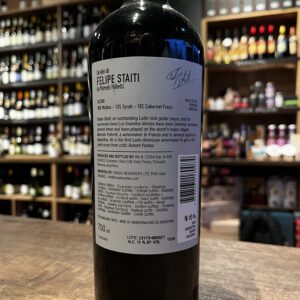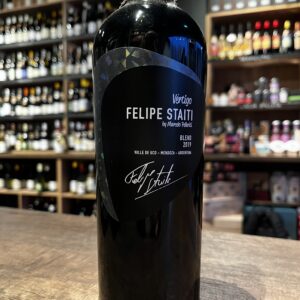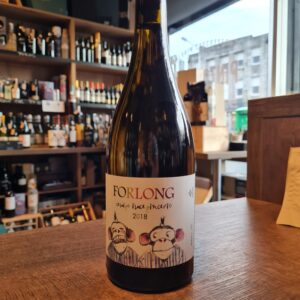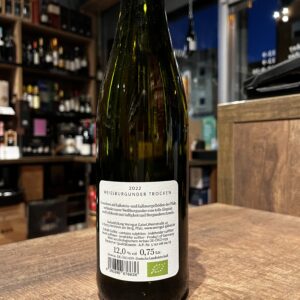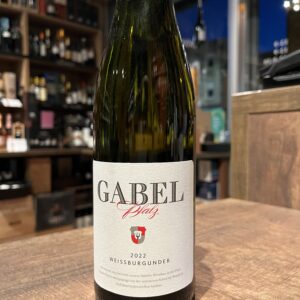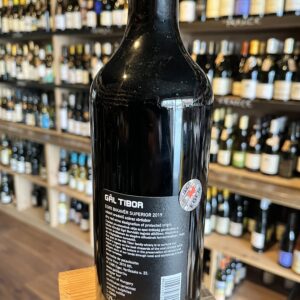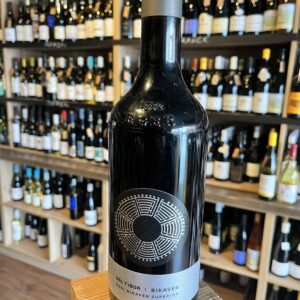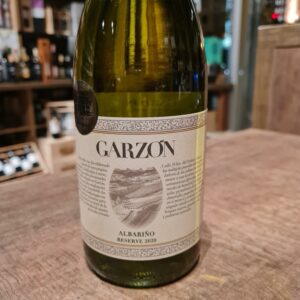-
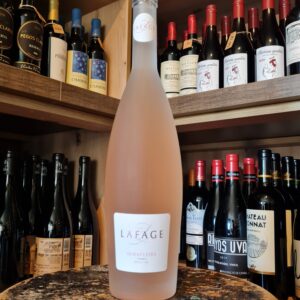 Fantastic Rosé! This organic beauty is just about as good as Rosé can get… beautiful bouquet of roses, strawberry and white peach. The palate is round, polished, silky and wonderfully balanced between fruity generosity and refreshing, minerally more-ishness. Grab some of this wine for summer while you can. It will sell out! It is another beauty that is clean, pure, has textured and elegant on the palate, with gorgeous purity, it’s a rocking rosé that does everything right. Its freshness and good acidity makes it the perfect companion for snacks and fresh dishes, fruit salads, grilled white fish without sauces, vegetable salads and the legendary pasta salads. In short, a wine to drink and taste at all hours.
Fantastic Rosé! This organic beauty is just about as good as Rosé can get… beautiful bouquet of roses, strawberry and white peach. The palate is round, polished, silky and wonderfully balanced between fruity generosity and refreshing, minerally more-ishness. Grab some of this wine for summer while you can. It will sell out! It is another beauty that is clean, pure, has textured and elegant on the palate, with gorgeous purity, it’s a rocking rosé that does everything right. Its freshness and good acidity makes it the perfect companion for snacks and fresh dishes, fruit salads, grilled white fish without sauces, vegetable salads and the legendary pasta salads. In short, a wine to drink and taste at all hours. -
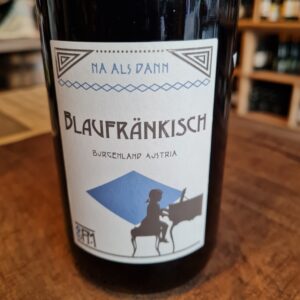 Blaufränkisch equals Austria. It is one of those typical, local, emerging grapes that have put Austria on the international wine market in recent years. Spicy nose with notes of ripe fruit such as currants and blackberries. The tannins are soft but present enough to structure the wine.All combines in a high-quality example of typical Blaufränkisch.
Blaufränkisch equals Austria. It is one of those typical, local, emerging grapes that have put Austria on the international wine market in recent years. Spicy nose with notes of ripe fruit such as currants and blackberries. The tannins are soft but present enough to structure the wine.All combines in a high-quality example of typical Blaufränkisch. -
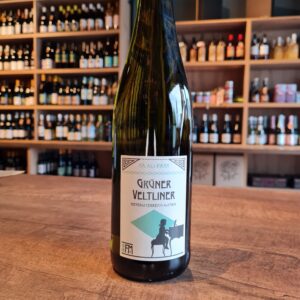 Gruner Veltliner is Austria’s most important indigenous grape and up until the 1990s it was relatively unheard of. Gruner Veltliner has many charms, one of them being the consistency of the quality and the flavour profile; it always delivers what it says on the tin. Ferdinand Mayr is a musician turned winemaker and his organic wines are singing with flavour and intensity. Whoever says Grüner Veltliner says Austria and vice versa. This version of Ferdinand Mayr is accessible and it charms you right away. Exuberant, lively nose of citrus, apple and white pepper. On the palate, the ripe fruit and spiciness create a pleasant tension with the acidity. Crispy and ripe, as if you were biting into a juicy apple. Flavor and spiciness characterize this wine. Fantastic with Japanese or Thai cuisine.
Gruner Veltliner is Austria’s most important indigenous grape and up until the 1990s it was relatively unheard of. Gruner Veltliner has many charms, one of them being the consistency of the quality and the flavour profile; it always delivers what it says on the tin. Ferdinand Mayr is a musician turned winemaker and his organic wines are singing with flavour and intensity. Whoever says Grüner Veltliner says Austria and vice versa. This version of Ferdinand Mayr is accessible and it charms you right away. Exuberant, lively nose of citrus, apple and white pepper. On the palate, the ripe fruit and spiciness create a pleasant tension with the acidity. Crispy and ripe, as if you were biting into a juicy apple. Flavor and spiciness characterize this wine. Fantastic with Japanese or Thai cuisine. -
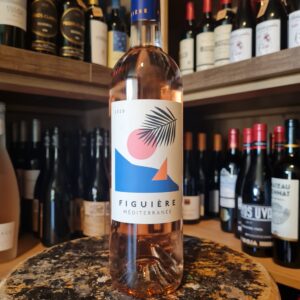 Here is a Provençal estate rosé sure to add some style to your summer! One smell, one sip and you get beamed to the Mediterranean Sea! This delicious Rosé is created by a pioneering Provence domaine of excellence. The family Combard is one of the ambassadors of a new generation of prestigious winemakers. You can smell notes of white flowers that then develop into white peach aromas. The palate expresses the velvety texture of citrus peel and the zestiness of an essential oil. Citrus profile with this wine that is astringent, green, tight and fresh.
Here is a Provençal estate rosé sure to add some style to your summer! One smell, one sip and you get beamed to the Mediterranean Sea! This delicious Rosé is created by a pioneering Provence domaine of excellence. The family Combard is one of the ambassadors of a new generation of prestigious winemakers. You can smell notes of white flowers that then develop into white peach aromas. The palate expresses the velvety texture of citrus peel and the zestiness of an essential oil. Citrus profile with this wine that is astringent, green, tight and fresh. -
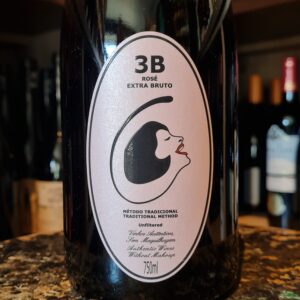 The Filipa Pato 3B Sparkling Rosé is a delicious treat of a wine from one of my favorite winemakers in Portugal. Filipa Pato is the daughter of arguably one of Portugal's most famous winemakers, Luis Pato. Passion for the traditional indigenous grape varietals of Bairrada led Filipa Pato to start her own project in 2001. She works a total of 12 hectares of vineyards scattered in various plots throughout the Bairrada appellation of Portugal. Utilizing biodynamic farming practices and minimal-intervention winemaking. The 3B is a homage to the traditional sparkling wines of Bairrada, with this being a blend of the indigenous Baga and Bical grapes. The Bical adds mineral and citrus notes to the berry red fruit notes of the Baga. This is a great little sparkler with a dry finish. Filipa and her husband, Belgian sommelier and restaurateur William Wouters, produce vinhos autênticos sem maquilagem – 'Authentic Wines Without Makeup.' 3B's-Bairrada, Baga & Bical
The Filipa Pato 3B Sparkling Rosé is a delicious treat of a wine from one of my favorite winemakers in Portugal. Filipa Pato is the daughter of arguably one of Portugal's most famous winemakers, Luis Pato. Passion for the traditional indigenous grape varietals of Bairrada led Filipa Pato to start her own project in 2001. She works a total of 12 hectares of vineyards scattered in various plots throughout the Bairrada appellation of Portugal. Utilizing biodynamic farming practices and minimal-intervention winemaking. The 3B is a homage to the traditional sparkling wines of Bairrada, with this being a blend of the indigenous Baga and Bical grapes. The Bical adds mineral and citrus notes to the berry red fruit notes of the Baga. This is a great little sparkler with a dry finish. Filipa and her husband, Belgian sommelier and restaurateur William Wouters, produce vinhos autênticos sem maquilagem – 'Authentic Wines Without Makeup.' 3B's-Bairrada, Baga & Bical -
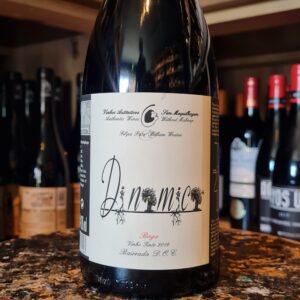 Filipa Pato is the confirmation of the old saying "son of fish knows how to swim". Although she followed the footsteps of her father Luís Pato, even in her academic training, Filipa always wanted to have her own world, her own project, where she would show her ideas, and go up with her own pulse. It was the 2001 harvest, a great year in Bairrada, which would provide all of this. That year, she decided to walk on her own feet, creating her dream. The success was immediate, and soon she rose to the status of one of the most brilliant winemakers in Portugal. The wines are the result of Filipa's innovative and brilliant spirit. They were quickly at the forefront of national and international criticism. In 2011, with her husband William Wouters, a prestigious Belgian Sommelier and owner of the Pazzo restaurant in Antwerp, Filipa receives the title "Newcomer of the year".
Filipa Pato is the confirmation of the old saying "son of fish knows how to swim". Although she followed the footsteps of her father Luís Pato, even in her academic training, Filipa always wanted to have her own world, her own project, where she would show her ideas, and go up with her own pulse. It was the 2001 harvest, a great year in Bairrada, which would provide all of this. That year, she decided to walk on her own feet, creating her dream. The success was immediate, and soon she rose to the status of one of the most brilliant winemakers in Portugal. The wines are the result of Filipa's innovative and brilliant spirit. They were quickly at the forefront of national and international criticism. In 2011, with her husband William Wouters, a prestigious Belgian Sommelier and owner of the Pazzo restaurant in Antwerp, Filipa receives the title "Newcomer of the year". -
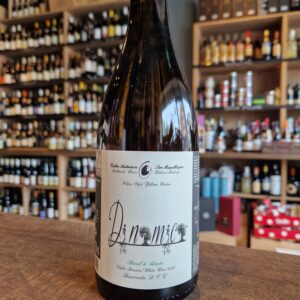 Filipa Pato and husband, William Wouters have created an expressive range of wines representing the native grape varietals of the Barriada region. Their philosophy is simple: "create authentic wines without make-up to express the true nature of the vineyards they come from". Bairrada is a coastal DOC which borders Vinho Verde, Dão and Lisboa. It has mild and wet winters and hot windy summers. The climatic thermal range, brought about by the Atlantic influence, brings high acidity and freshness to the grapes here. Filipa and William practice biodynamic viticulture and are undergoing conversion to organic certification. The wine is unfined. Drink with sheep and goats cheese, dressed salads, and delicate poultry dishes.
Filipa Pato and husband, William Wouters have created an expressive range of wines representing the native grape varietals of the Barriada region. Their philosophy is simple: "create authentic wines without make-up to express the true nature of the vineyards they come from". Bairrada is a coastal DOC which borders Vinho Verde, Dão and Lisboa. It has mild and wet winters and hot windy summers. The climatic thermal range, brought about by the Atlantic influence, brings high acidity and freshness to the grapes here. Filipa and William practice biodynamic viticulture and are undergoing conversion to organic certification. The wine is unfined. Drink with sheep and goats cheese, dressed salads, and delicate poultry dishes. -
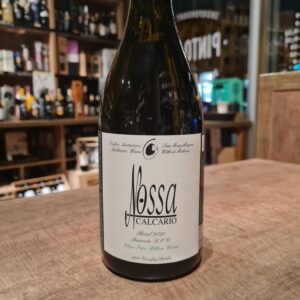 This mineral-driven white wine from Filipa Pato is akin to top quality white Burgundy. Using the Bical grape, the wine is aged in old French oak barrels and displays a great balance between creamy richness and lean minerality. Following in the footsteps in the winemaking traditions of her well-known father, Luis, Filipa Pato has now, in her own right, garnered a reputation for producing a superb range of wines in the heart of Bairrada, in Ois do Bairro. Focussing on Bairrada’s local native grape varieties, Filipa’s top-level white. It should be served not too cold, decanted into elegant glasses. It goes well with cheeses, fish dishes and salads.
This mineral-driven white wine from Filipa Pato is akin to top quality white Burgundy. Using the Bical grape, the wine is aged in old French oak barrels and displays a great balance between creamy richness and lean minerality. Following in the footsteps in the winemaking traditions of her well-known father, Luis, Filipa Pato has now, in her own right, garnered a reputation for producing a superb range of wines in the heart of Bairrada, in Ois do Bairro. Focussing on Bairrada’s local native grape varieties, Filipa’s top-level white. It should be served not too cold, decanted into elegant glasses. It goes well with cheeses, fish dishes and salads. -
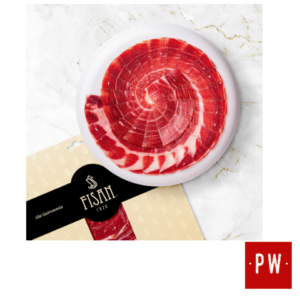 One of FISAN’s most prized products in a practical format to delight your palate with the most extraordinary nuances of 100% Iberico Bellota Ham Alta Gastronomia at any time and place. Its secret: the selection from the earliest stage of the best pure Iberico breed pigs, patience and curing in our natural cellars in Guijuelo, which leads to the best Pata Negra Ham you will ever remember. Only the most exceptional pieces qualify as Alta Gastronomia.
One of FISAN’s most prized products in a practical format to delight your palate with the most extraordinary nuances of 100% Iberico Bellota Ham Alta Gastronomia at any time and place. Its secret: the selection from the earliest stage of the best pure Iberico breed pigs, patience and curing in our natural cellars in Guijuelo, which leads to the best Pata Negra Ham you will ever remember. Only the most exceptional pieces qualify as Alta Gastronomia. -
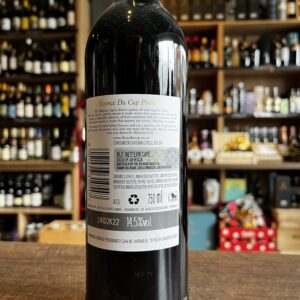
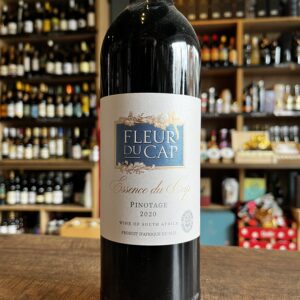 The Fleur du Cap approach is unconstrained. Using only meticulously selected grapes from the finest vineyards across the Cape Winelands, the winery produces a range of wines that offer diversity of choice and diversity of taste. Essence du Cap is known for exceptional quality and wines that express their true varietal character. The grapes were selected from four different vineyard blocks situated around the Bottelary Hills, which were planted in 1987, 1994, 1996 and 1997. Two of the vineyards are bush vines and the remaining trellised. The soils consist of deep decomposed shale (bush vines) and granite (trellised vines), with good water retention. Yields for the bush vines were 6 to 8 t/ha and the trellised vineyards 10 to 12 t/ha. Supplementary irrigation was given during the latter stages of the season to ensure full ripening. Pest and disease control is implemented according to South African subjective IPW standards. This wine is an ideal accompaniment to grilled lamb and poultry, pork roasts and game fish. It is perfect with classic Cape cuisine like Bobotie and Malay Curries, as well as spicy Mexican food.
The Fleur du Cap approach is unconstrained. Using only meticulously selected grapes from the finest vineyards across the Cape Winelands, the winery produces a range of wines that offer diversity of choice and diversity of taste. Essence du Cap is known for exceptional quality and wines that express their true varietal character. The grapes were selected from four different vineyard blocks situated around the Bottelary Hills, which were planted in 1987, 1994, 1996 and 1997. Two of the vineyards are bush vines and the remaining trellised. The soils consist of deep decomposed shale (bush vines) and granite (trellised vines), with good water retention. Yields for the bush vines were 6 to 8 t/ha and the trellised vineyards 10 to 12 t/ha. Supplementary irrigation was given during the latter stages of the season to ensure full ripening. Pest and disease control is implemented according to South African subjective IPW standards. This wine is an ideal accompaniment to grilled lamb and poultry, pork roasts and game fish. It is perfect with classic Cape cuisine like Bobotie and Malay Curries, as well as spicy Mexican food. -
Out of stock
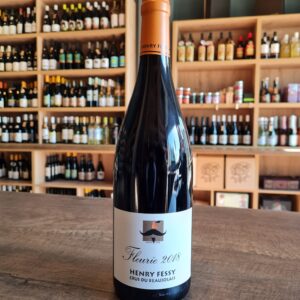 Lying on homogeneous soils of pink granite containing large crystals, Fleurie is often regarded as the ''Queen of Beaujolais'' with their vines averaging 50 years old. The wines are characterized by great finesse and elegance with floral aromas of irises and violets. An elegant and delicate wine. Lovely paired with roasted chicken, grilled meats and semi-cured cheeses
Lying on homogeneous soils of pink granite containing large crystals, Fleurie is often regarded as the ''Queen of Beaujolais'' with their vines averaging 50 years old. The wines are characterized by great finesse and elegance with floral aromas of irises and violets. An elegant and delicate wine. Lovely paired with roasted chicken, grilled meats and semi-cured cheeses -
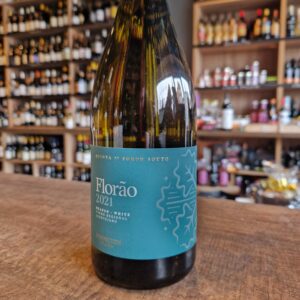 Quinta da Fonte Souto is in the Portalegre subregion of the Alto Alentejo in southern Portugal. Close to the São Mamede range (1,025 metres), the property benefits from the area’s altitude with its cooler microclimate in sharp contrast to the Alentejo region’s typically hot and dry conditions. Yields are low due to the schist and granite soils, which are less fertile than those found in the flat and rolling terrain which characterizes the majority of the Alentejo.
Quinta da Fonte Souto is in the Portalegre subregion of the Alto Alentejo in southern Portugal. Close to the São Mamede range (1,025 metres), the property benefits from the area’s altitude with its cooler microclimate in sharp contrast to the Alentejo region’s typically hot and dry conditions. Yields are low due to the schist and granite soils, which are less fertile than those found in the flat and rolling terrain which characterizes the majority of the Alentejo. -
Out of stock
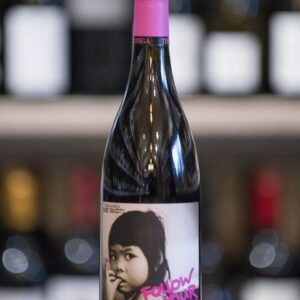 Craig and Carla Hawkins launched Testalonga in the north of Swartland, South Africa in 2008. They are part of a revolutionary ground swell taking place in South African wine, where traditions are being challenged and brave new territory is being explored. The painfully small amount of wine that this duo produces gets snapped up in short order the world over. Known for their striking intensity and nervy energy, Craig and Carla's wines are on the cutting edge of the natural wine movement in their country.This is the lightest, daintiest version of Carignan one could imagine. It's got more in common with, say a Jura rouge or something Cab-Franc-like out of the Loire Valley than a classic Rhone red.It's fresh, racy, filled with character and seasoned with a little wildness. Great with on summer afternoon, first courses, seasoned vegetables. Enjoy
Craig and Carla Hawkins launched Testalonga in the north of Swartland, South Africa in 2008. They are part of a revolutionary ground swell taking place in South African wine, where traditions are being challenged and brave new territory is being explored. The painfully small amount of wine that this duo produces gets snapped up in short order the world over. Known for their striking intensity and nervy energy, Craig and Carla's wines are on the cutting edge of the natural wine movement in their country.This is the lightest, daintiest version of Carignan one could imagine. It's got more in common with, say a Jura rouge or something Cab-Franc-like out of the Loire Valley than a classic Rhone red.It's fresh, racy, filled with character and seasoned with a little wildness. Great with on summer afternoon, first courses, seasoned vegetables. Enjoy -
Out of stock
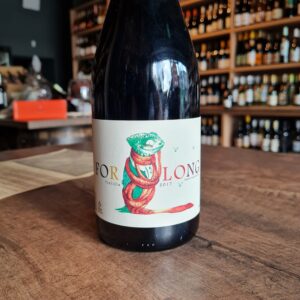 Fourth project of Bodegas Forlong (Cádiz). Vineyard consists of albariza soils in the Pago de “el Forlon” in Balbaina Baja, located in the coastal area of Puerto de Santa Maria, 7 km from the sea. Takes advantage of the proximity of the sea, and the purity of the albariza, as well as the local salt-peters which impart saline, chalky character to the grapes. The Tintilla de Rota grape, a native variety of the area, already existed on the farm along with the rest of the grapes, but they did not give it any value at the beginning, to the point that the first year they even gave it away. Once they discovered its potential "we almost pulled our hair at the thought that we had been giving it away." Has limited production of 2700 Bottles. As it is a native variety, they wanted to reflect it in some way on the label, and what better way than to put a native animal like the chameleon, which needs albariza soils that are easy to move to bury its eggs. Their long and rolled tongue is a reflection of Rocío and Alejandro's adventure of "rolling the blanket over their heads" when making a quality organic wine with Tintilla de Rota. Its vinification is carried out in clay jars, thus being a different wine. Pair it with entrecote steak, slow-cooked lamb, suckling pig, BBQ and grilled meats, porcini mushrooms, Jerusalem artichokes, hard cheeses, olives, jamón de pata negra.
Fourth project of Bodegas Forlong (Cádiz). Vineyard consists of albariza soils in the Pago de “el Forlon” in Balbaina Baja, located in the coastal area of Puerto de Santa Maria, 7 km from the sea. Takes advantage of the proximity of the sea, and the purity of the albariza, as well as the local salt-peters which impart saline, chalky character to the grapes. The Tintilla de Rota grape, a native variety of the area, already existed on the farm along with the rest of the grapes, but they did not give it any value at the beginning, to the point that the first year they even gave it away. Once they discovered its potential "we almost pulled our hair at the thought that we had been giving it away." Has limited production of 2700 Bottles. As it is a native variety, they wanted to reflect it in some way on the label, and what better way than to put a native animal like the chameleon, which needs albariza soils that are easy to move to bury its eggs. Their long and rolled tongue is a reflection of Rocío and Alejandro's adventure of "rolling the blanket over their heads" when making a quality organic wine with Tintilla de Rota. Its vinification is carried out in clay jars, thus being a different wine. Pair it with entrecote steak, slow-cooked lamb, suckling pig, BBQ and grilled meats, porcini mushrooms, Jerusalem artichokes, hard cheeses, olives, jamón de pata negra. -
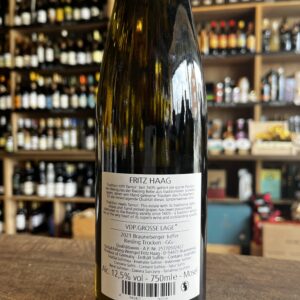
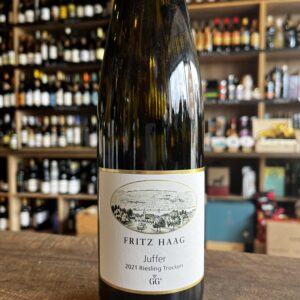 The historic Fritz Haag wine estate is located in the heart of the central Mosel River Valley. The earliest documentation of the estate dates back to 1605. At that time, the village in which it is situated was known as “Dusemond.” In 1925, this village was renamed “Brauneberg” (“brown mountain,” a reference to the color of the slate soil in this area of the Mosel) in an endeavor to further promote the reputation of its world-renowned vineyards “Brauneberger Juffer” and “Brauneberger Juffer Sonnenuhr.” Like all the top Mosel producers, Fritz Haag produces a range of wines including some very rich, late harvest dessert wines. These wines put the region on the map for luxury wine in the 17 and 1800s, making some Mosel Riesling more pricey and coveted than first growth Bordeaux. But in truth the wines that the locals drank, especially in the summer, were generally off dry to completely bone dry. Fritz Haag's vineyards sit along the slopes of the Brauneberger hill and the vineyards of Juffer and Juffer Sonnenuhr. Brauneberger faces almost entirely south which makes it a bit easier to get fully ripe Riesling in the classically cold, wet Mosel. That has changed a bit recently of course, but this is still a prized site for wines that perfectly balance finesse and power, complexity and airy drinkability. This specific wine is a VDP GG or Grosse Lage which is equivalent to a Grand Cru.
The historic Fritz Haag wine estate is located in the heart of the central Mosel River Valley. The earliest documentation of the estate dates back to 1605. At that time, the village in which it is situated was known as “Dusemond.” In 1925, this village was renamed “Brauneberg” (“brown mountain,” a reference to the color of the slate soil in this area of the Mosel) in an endeavor to further promote the reputation of its world-renowned vineyards “Brauneberger Juffer” and “Brauneberger Juffer Sonnenuhr.” Like all the top Mosel producers, Fritz Haag produces a range of wines including some very rich, late harvest dessert wines. These wines put the region on the map for luxury wine in the 17 and 1800s, making some Mosel Riesling more pricey and coveted than first growth Bordeaux. But in truth the wines that the locals drank, especially in the summer, were generally off dry to completely bone dry. Fritz Haag's vineyards sit along the slopes of the Brauneberger hill and the vineyards of Juffer and Juffer Sonnenuhr. Brauneberger faces almost entirely south which makes it a bit easier to get fully ripe Riesling in the classically cold, wet Mosel. That has changed a bit recently of course, but this is still a prized site for wines that perfectly balance finesse and power, complexity and airy drinkability. This specific wine is a VDP GG or Grosse Lage which is equivalent to a Grand Cru. -
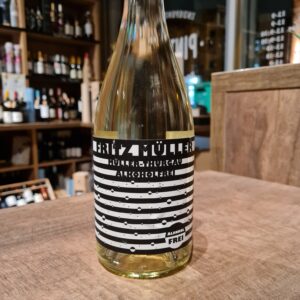 Non-alcoholic wine born in 2009 from a bubbly guy with old roots and modern tastes. Invariably well-dressed, he captures the world’s attention with his ranges of Non-Alcoholic wines in Frizzante style. Guido Walter and Jürgen Hofmann put their heads together. The German answer to frizzante had to be fresh and fruity, uncomplicated and affordable. A semi-sparkling wine that begins a carefree evening and lets you continue dancing late into the night. What began as an experimental small edition soon spread its wings and took flight. Suddenly it could be found at every party and could be seen winning design awards and notes of good taste. Everyone wants Fritz Müller. Refreshing, fizzy and frivolous: completely uncomplicated, the non-alcoholic Fritz Müller offers light-footed fun and fruity enjoyment. Vinified from the same grapes as the Fritz Müller semi-sparkling wine, this version entices sipping one or two glasses more without regret the next day. Wonderfully pure, it is best enjoyed chilled to 8°C, or as an ingredient in virgin cocktails. Guilt-free wine ;)
Non-alcoholic wine born in 2009 from a bubbly guy with old roots and modern tastes. Invariably well-dressed, he captures the world’s attention with his ranges of Non-Alcoholic wines in Frizzante style. Guido Walter and Jürgen Hofmann put their heads together. The German answer to frizzante had to be fresh and fruity, uncomplicated and affordable. A semi-sparkling wine that begins a carefree evening and lets you continue dancing late into the night. What began as an experimental small edition soon spread its wings and took flight. Suddenly it could be found at every party and could be seen winning design awards and notes of good taste. Everyone wants Fritz Müller. Refreshing, fizzy and frivolous: completely uncomplicated, the non-alcoholic Fritz Müller offers light-footed fun and fruity enjoyment. Vinified from the same grapes as the Fritz Müller semi-sparkling wine, this version entices sipping one or two glasses more without regret the next day. Wonderfully pure, it is best enjoyed chilled to 8°C, or as an ingredient in virgin cocktails. Guilt-free wine ;) -
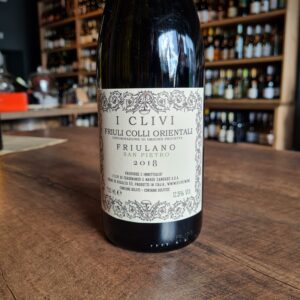 The wines of i Clivi are born in Friuli in between the Collio Goriziano and the eastern hills of Udine, named Colli Orientali, where, on sunny slopes – clivi meaning “slopes” – Altogether there is cultivated 12 hectares of certified organic vineyards planted with the indigenous varieties Ribolla, Friulano, Verduzzo, and Malvasia, whose only international grape is Merlot, a variety which found home in this area more than a century ago. Taking care of this important heritage of old vines, aged between 60 and 80 years, it is for Ferdinando and Mario Zanusso a reminder of the responsibility with which they guard and produce wine on this strip of land, giving the chance to express two distinct D.O.C. denominations, Collio, and Colli Orientali del Friuli, whose sensory difference is related exclusively to the microclimate. The low yields produced by these old vines give a natural concentration and complexity to the fruit they seek to transform naturally with spontaneous fermentation, maintaining the elegance and aromatic integrity through careful maturation in steel tanks for 50,000 bottles of varietal wines with great personality, distinguished grace, and delicacy.
The wines of i Clivi are born in Friuli in between the Collio Goriziano and the eastern hills of Udine, named Colli Orientali, where, on sunny slopes – clivi meaning “slopes” – Altogether there is cultivated 12 hectares of certified organic vineyards planted with the indigenous varieties Ribolla, Friulano, Verduzzo, and Malvasia, whose only international grape is Merlot, a variety which found home in this area more than a century ago. Taking care of this important heritage of old vines, aged between 60 and 80 years, it is for Ferdinando and Mario Zanusso a reminder of the responsibility with which they guard and produce wine on this strip of land, giving the chance to express two distinct D.O.C. denominations, Collio, and Colli Orientali del Friuli, whose sensory difference is related exclusively to the microclimate. The low yields produced by these old vines give a natural concentration and complexity to the fruit they seek to transform naturally with spontaneous fermentation, maintaining the elegance and aromatic integrity through careful maturation in steel tanks for 50,000 bottles of varietal wines with great personality, distinguished grace, and delicacy. -
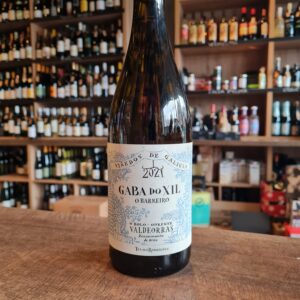 This slinky, mineral white hails from Valdeorras (“Valley of Gold”) in eastern Galicia, a region once famous for goldmining and now best known for its unique and complex wines made from the indigenous Godello grape. The wine is named for the river Sil that flows through the region (Xil is its ancient name, used by the Celtic people who once inhabited the area). Many of the river’s tributaries are flanked on either side by vineyards, planted in terraces on steep slate hillsides. The label displays a dozen bridges, symbolizing the idea of crossing from one vineyard plot to another. Gaba do Xil Godello is produced partially from grapes that are partially estate-grown and partially sourced from long-term suppliers. They come from 4 plots (O Val Grande, O Rasedo, A Torgueira, and O Valverde) located near the Bibei tributary, close to the town of Santa Cruz. Dotted with chestnut trees mixed with rockrose, the old granitic terraces barely have enough space to squeeze in the odd row of vines, following the folds of the mountains that plunge into the river. The vines grow in shallow, stony granite soils on terraces facing south, west and northwest. These coarse soils are low fertility and have low water retention capacity, forcing the vines to struggle and limiting yields. This Godello, is unoaked, gentle, restrained and precise which is dry and soft with a touch of godello's distinctive minerally citrus fruit, absoloutly perfect with light sea food dishes. Excellent value
This slinky, mineral white hails from Valdeorras (“Valley of Gold”) in eastern Galicia, a region once famous for goldmining and now best known for its unique and complex wines made from the indigenous Godello grape. The wine is named for the river Sil that flows through the region (Xil is its ancient name, used by the Celtic people who once inhabited the area). Many of the river’s tributaries are flanked on either side by vineyards, planted in terraces on steep slate hillsides. The label displays a dozen bridges, symbolizing the idea of crossing from one vineyard plot to another. Gaba do Xil Godello is produced partially from grapes that are partially estate-grown and partially sourced from long-term suppliers. They come from 4 plots (O Val Grande, O Rasedo, A Torgueira, and O Valverde) located near the Bibei tributary, close to the town of Santa Cruz. Dotted with chestnut trees mixed with rockrose, the old granitic terraces barely have enough space to squeeze in the odd row of vines, following the folds of the mountains that plunge into the river. The vines grow in shallow, stony granite soils on terraces facing south, west and northwest. These coarse soils are low fertility and have low water retention capacity, forcing the vines to struggle and limiting yields. This Godello, is unoaked, gentle, restrained and precise which is dry and soft with a touch of godello's distinctive minerally citrus fruit, absoloutly perfect with light sea food dishes. Excellent value -
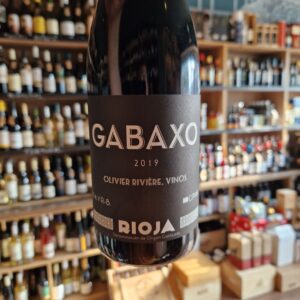
Rioja Gabaxo Olivier Riviere Biodynamic Wine, Wild yeast, French oak Maturation, full bodied but beautifully fresh and balanced. No new oak in Gabacho, but loads of classy Rioja character and sheer drinkability! Gabacho does see some wood, a small amount of old french barrels are used for ageing up to a year. This adds no flavour but helps to soften the wine slightly. This really is lovely stuff, rich but very fresh and balanced red wine with a touch of the dark and brooding about it and a touch of the animal too. It benefits from decanting and also from good bottle ageing. Try it, it will change your mind about Rioja


